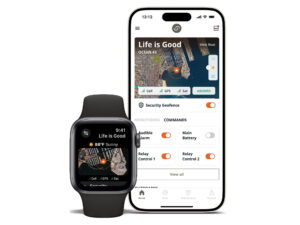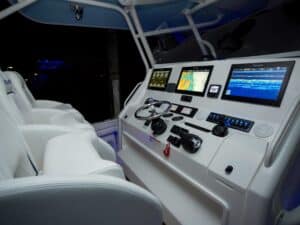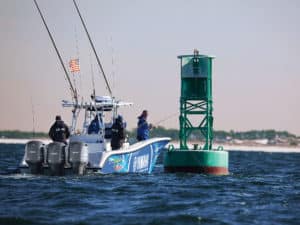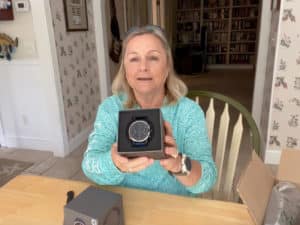
Accurate heading information is critical to electronic navigation. While electronic and fluxgate compasses work fine, they’re typically only accurate to 1 to 3 degrees and are subject to polar and magnetic interference.
Instead of using magnetic fields to sense their orientation, satellite compasses employ multiple antennas to determine minute time-stamp differences from received Global Navigation Satellite System transmissions. This information is then used to calculate heading.
Furuno’s SCX-20 (NMEA 2000-compatible) and SCX-21 (NMEA 0183-compatible) compasses leverage four internal antennas to determine heading information to 0.5 degrees while eliminating the signal-reception issues that sometimes plagued previous-generation satellite compasses.
I talked with Eric Kunz, Furuno’s senior product manager, to learn more.
Q: What technology enables a satellite compass to work?
A: GNSS satellites send out a radio-frequency signal that’s received by the compass. The compass can detect partial wavelengths of the signal, and it determines the timing differences between when the signal arrives at its different antennas. The compass knows where its antennas are, and it knows where the satellites are, so it can calculate the timing difference, which is something like a billionth of a second. This allows it to determine heading.
Only two of its antennas need to receive the signal to determine heading.
Local obstructions used to be satellite compasses’ Achilles’ heel. If the compass wasn’t mounted high enough, the signal would bounce off superstructure and cause multipath interference. That’s why we use four antennas in the SCX-20/21—it creates a multiplying effect and gives us six ways to calculate heading because of the baselines between antennas.
Q: What makes the SCX-20/21 an improvement over Furuno’s previous-generation SC30?
A: It has four antennas—the SC30 has two. It also uses all solid-state componentry, which optimizes efficiency.
The SC30 cost $2,495, but the SCX-20/21 is $1,195, so it delivers lower cost and greater precision.
Q: What are its biggest benefits?
A: Heading accuracy. You use less fuel when traveling point to point, both hand steering and using the autopilot, because you’ve got a heading system with almost no error. This information can be applied to all navigation, from autopilots to radar, to chart display and sonar. They all need accurate heading information.
It also provides speed and course information, and its six-axis inertial measurement unit delivers pitch, roll, yaw and heave information. It can determine what direction the boat is pointing when it’s motionless.
Read Next: Furuno SCX-20/SCX-21 Satellite Compasses
Q: Does someone need a Furuno helm to leverage an SCX-20/21?
A: No, there’s no issue with it on an NMEA 0183 or N2K network with our competitors’ products.
Q: Who are Furuno’s target customers for the SCX-20/21?
A: The fact that the price is so reasonable means that you can put it on any kind of boat bigger than 20 feet, where you want accurate heading information.
Q: Anything else?
A: The SCX-20/21 is small—9.8-by-7.6-by-2.9 inches and weighs 2.2 pounds—and can be pole- or flush-mounted. Also, you don’t need to swing an SCX-20/21—just align it once and you’re done.
If every boat had one, it would save millions of dollars per year in fuel.








